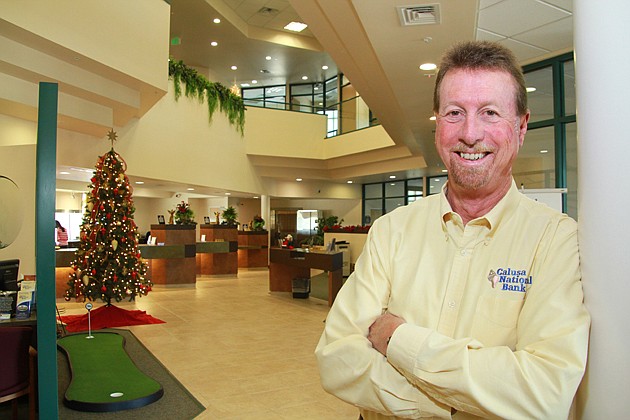Customers are coming back for loans.
A recovering economy on the Gulf Coast boosted asset growth at most banks headquartered in the region. Just nine of the 45 banks posted asset declines in the year ending Sept. 30.
“It's broad based,” says Joseph Chillura, the CEO of USAmeribank, based in Largo. USAmeribank is the second-largest lender on the Gulf Coast with nearly $2.8 billion in assets.
New loans include commercial real estate lending for buildings such as apartments and warehouses. “We're also seeing retail pick up,” Chillura adds. USAmeribank made $26.6 million in loans backed by the U.S. Small Business Administration in the year ending Sept. 30, making it the largest SBA lender of any bank headquartered in the Tampa Bay area.
Not all asset declines were bad. A recovering real estate market means bankers were able to resolve bad loans and remove them from their banks' balance sheets.
“We've made great progress in reducing nonperforming assets,” says Anthony Leo, the CEO of First Home Bank in Seminole. First Home's total assets fell 10% to $69.8 million in the year ending Sept. 30, making it the smallest lender headquartered on the Gulf Coast (Members Trust Co. is smaller, but it is a special-purpose savings bank that doesn't make any loans).
 At the top of the biggest locally based banks is Raymond James Bank, with more than $10.5 billion in assets, an increase of 8.2% in the year ending Sept. 30. Executives with the bank were not available to discuss performance. C1 Bank, based in St. Petersburg, posted the biggest gain in assets of any bank in the region in the year ending Sept. 30 with a 43% increase to $1.3 billion. C1 Bank officials couldn't be reached.
At the top of the biggest locally based banks is Raymond James Bank, with more than $10.5 billion in assets, an increase of 8.2% in the year ending Sept. 30. Executives with the bank were not available to discuss performance. C1 Bank, based in St. Petersburg, posted the biggest gain in assets of any bank in the region in the year ending Sept. 30 with a 43% increase to $1.3 billion. C1 Bank officials couldn't be reached.
Banks on the Gulf Coast have been growing their assets by acquisition and branch openings. For example, Naples-based First National Bank of the Gulf Coast recently acquired Shamrock Bank, a cross-town rival with $101 million in assets, and is opening a branch on Kennedy Boulevard in Tampa. As of Sept. 30, First National Bank reported $667.5 million in assets.
Gary Tice, chairman of First National, says the plan is to grow the bank to $2 billion in assets within the next two to three years. Backed by private equity funds, First National is scouting more acquisition opportunities throughout the region.
USAmeribank plans to add branches in areas such as north Pinellas County and may consider an acquisition, including perhaps in Sarasota. “I'd love to be there in a year or two,” says Chillura. “It all depends on what we find.”
The race to get bigger has been prompted by the increasing burden of government regulations. Hiring compliance officers and investing in technology is a greater burden on small banks, some argue.
Still, many small-bank executives say they can absorb the compliance costs even though they're significant. “We're sucking it up,” says Lew Albert, the CEO of Calusa National Bank in Punta Gorda. Calusa reported assets of $148 million as of Sept. 30.
Albert says outside providers of compliance systems will compete to provide services to smaller banks, driving down those costs over time. “We went through the same crisis in the early '90s,” he says. “I'm not writing off community banks.”



 At the top of the biggest locally based banks is Raymond James Bank, with more than $10.5 billion in assets, an increase of 8.2% in the year ending Sept. 30. Executives with the bank were not available to discuss performance. C1 Bank, based in St. Petersburg, posted the biggest gain in assets of any bank in the region in the year ending Sept. 30 with a 43% increase to $1.3 billion. C1 Bank officials couldn't be reached.
At the top of the biggest locally based banks is Raymond James Bank, with more than $10.5 billion in assets, an increase of 8.2% in the year ending Sept. 30. Executives with the bank were not available to discuss performance. C1 Bank, based in St. Petersburg, posted the biggest gain in assets of any bank in the region in the year ending Sept. 30 with a 43% increase to $1.3 billion. C1 Bank officials couldn't be reached.




